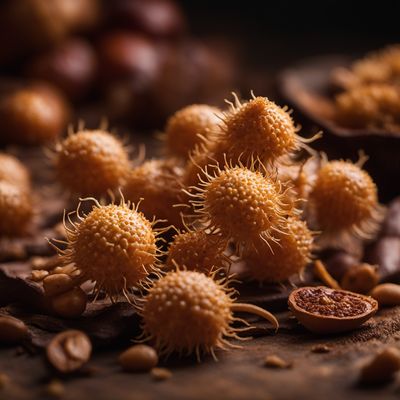
Ingredient
Additional not listed root and tuber vegetables (excluding starchy- and sugar-)
The Underground Gems
Root and tuber vegetables are a group of underground plant parts that store nutrients and provide energy for the plants. They come in various shapes, sizes, and colors, and each vegetable has its own unique flavor and texture. These vegetables are often used in soups, stews, roasts, and other hearty dishes, adding depth and complexity to the flavors.
Origins and history
Root and tuber vegetables have been cultivated and consumed by humans for thousands of years. They have played a significant role in the diets of different cultures around the world, providing sustenance and nourishment. In many cultures, these vegetables are deeply rooted in culinary traditions and are celebrated for their versatility and nutritional value.
Nutritional information
Root and tuber vegetables are rich in dietary fiber, vitamins, minerals, and antioxidants. They are low in calories and fat, making them a healthy addition to a balanced diet. These vegetables provide essential nutrients such as vitamin C, potassium, and folate. The exact nutritional composition may vary depending on the specific vegetable.
Allergens
There are no known allergens associated with root and tuber vegetables.
How to select
When selecting root and tuber vegetables, choose ones that are firm, free from blemishes, and have smooth skin. Avoid vegetables that are soft, wrinkled, or have signs of decay. The size and shape may vary depending on the vegetable, but they should feel heavy for their size. Fresh root and tuber vegetables can be found in the produce section of grocery stores or farmers markets.
Storage recommendations
To prolong their freshness, store root and tuber vegetables in a cool, dark, and dry place, such as a cellar or a refrigerator. Keep them separate from fruits and other vegetables to prevent spoilage. Some vegetables, like potatoes and onions, should be stored in a well-ventilated container to prevent sprouting or rotting.
How to produce
Root and tuber vegetables can be grown in home gardens or purchased from farmers markets or grocery stores. They require well-drained soil, adequate sunlight, and regular watering. With proper care, these vegetables can be successfully grown by amateur gardeners.
Preparation tips
Root and tuber vegetables can be prepared in various ways, depending on the specific vegetable. They can be roasted, boiled, mashed, steamed, or used in soups, stews, and casseroles. Some vegetables, like parsnips and turnips, can be enjoyed raw in salads or as crunchy snacks. Experiment with different cooking techniques and flavor combinations to discover your favorite preparations.
Substitutions
There are no direct substitutions for root and tuber vegetables, as each vegetable has its own unique flavor and texture. However, you can experiment with other vegetables that offer similar characteristics in terms of taste and texture.
Culinary uses
Root and tuber vegetables are incredibly versatile and can be used in a wide range of culinary applications. They are commonly used in soups, stews, roasts, gratins, and casseroles. They can also be mashed, roasted, or used as a base for vegetable purees. Additionally, they can be grated or sliced and used in salads or enjoyed as a side dish.
Availability
Root and tuber vegetables are commonly available in various regions around the world, including Europe, North America, Asia, and South America. The specific availability may vary depending on the vegetable and the local climate.

